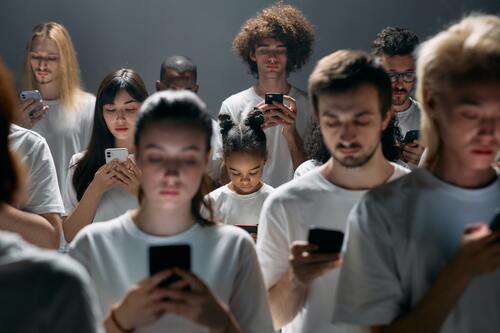
The year 2020 had a profound impact on the global population, one that was reflected in the way people studied, worked, shopped for leisure and essential goods, interacted with others, and even lived. The unifying factor of this impact was the absence of social contact, which forced people to rethink life and its interactions through one (or several) screens. the absence of social contact that forced them to rethink their life and their interactions through one (or more) screens.
In this crisis-stricken world, where the transition to virtuality came without warning, hundreds of aspects had to be rethought. Companies, universities, schools, and restaurants that had been successfully offering services in person for decades were suddenly faced with the uncertainty of a world mediated by screens. It was in this scenario that those who were able to evolve survived, while those who didn’t are now part of history. a world mediated by screens and it was so, as those who knew how to evolve survived and those who do not, today they are history.
In this newly evolved world, new rules emerged, which different companies had to apply either on their own or through their digital marketing agencies to stay relevant. Among these, we find:
- No to window displays, yes to websites: The website went from being an option to becoming a necessity. Not just any necessity, though—the website became the strategy behind all actions that, regardless of the medium, always lead to it to acquire more information or purchase products, whether they are food, clothing, cosmetics, or even services.
- Easy and intuitive? Yes, please!: As websites went from being accessories to becoming the main channel, they had to become more user-friendly, designed with UX and UI (usability) in mind. This strategy had to include the older population, those who preferred to shop in person and came to the digital world out of necessity, not choice. This group, less familiar with the virtual world, demands shorter and simpler processes.
- Speed as a mandate: Speed in website load times became crucial because with so many options, there was no time to wait. Speed also applied to response times to requests—everything is expected on the same day, and any response after 3 hours is discarded.
- Direct and real-time communication: Online chats and business WhatsApp became essential communication channels. Since customers could no longer visit stores and receive assistance from staff, these two channels filled the gap and provided users with the attention they expected and needed.
- Multiplicity of channels: Social media, websites, business WhatsApp, text messages, and even eBooks. Digital users became more demanding, consuming products and services in a broader way and expecting to have a full network of applications and channels through which to contact and be contacted.
- The art of standing out: Finally, after months of closures and hundreds of bankruptcies, businesses began migrating massively to digital, applying some basic techniques. This increased competition, which led to a new challenge: how to continue standing out? With strategy.
If we carefully analyze all of the above, we can see that it boils down to strategy—digital marketing strategies that, like life itself, are ever-changing and different for each case. This is why, now more than ever, it is essential to rely on experts in the field. Let’s not forget, being digital is no longer a bonus; it’s the minimum expected. In such a competitive environment, it’s best to have the guidance of experts. If you want to know more, contact us through our WhatsApp.



